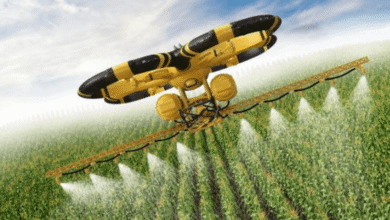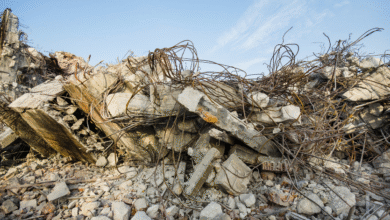Turbine Rotor Repair: Restoring Reliability and Efficiency in Power Systems

Turbines are the workhorses of modern energy and transportation systems. From generating electricity in gas and steam power plants to powering aircraft engines and heavy industrial machinery, they convert thermal, kinetic, or hydraulic energy into usable mechanical motion. At the core of this conversion process lies the rotor—a rotating shaft that holds blades or buckets and transfers energy to a generator or propulsion system. Because the rotor is subject to extreme heat, high pressure, and mechanical stresses, it inevitably suffers from wear and damage over time.
Replacing an entire turbine rotor is costly, time-consuming, and logistically complex. This is why industries rely on turbine rotor repair as a critical engineering solution. Repairing a rotor not only restores its functionality but also extends its operational life, improves efficiency, and significantly reduces downtime. In this article, we will examine why turbine rotor repair is so important, the types of damage commonly encountered, how repair is carried out, and how new technologies are shaping the future of this essential practice.
The Role of the Rotor in Turbines
The rotor is the centerpiece of a turbine’s operation. In a gas turbine, it endures the direct impact of high-temperature combustion gases, often exceeding 1,200°C. Steam turbine rotors must withstand high-pressure steam flow, while hydroelectric turbine rotors face immense hydraulic forces and the constant threat of cavitation. The stresses on a rotor are relentless, and even small defects can cause efficiency losses, vibration issues, or catastrophic failures. This makes rotor reliability fundamental not only to performance but also to plant safety.
See also: Editing for Narrative Storytelling: Tools and Techniques
Causes of Rotor Damage
Rotor damage develops gradually under the combined effects of thermal, mechanical, and chemical stresses. Repeated heating and cooling cycles cause thermal fatigue, leading to cracks and distortions in the metal structure. At high operating temperatures, materials may also experience creep, a phenomenon where they deform permanently under prolonged stress.
In addition to thermal issues, rotors are vulnerable to corrosion and erosion. Contaminants in steam or impurities in fuels can corrode surfaces, while high-velocity particles erode blade attachment areas. In gas turbines, foreign object damage is another risk—small debris entering the intake can strike rotor surfaces with enough force to cause dents or fractures. Over time, stress corrosion cracking may also occur, particularly in steam turbines operating in humid environments. Each of these damage mechanisms compromises the rotor’s integrity, requiring timely inspection and repair.
Inspection and Diagnosis
Repair begins with thorough inspection and diagnosis, which helps engineers determine the extent of damage and select the right approach. Visual inspections reveal surface cracks and signs of distortion, while non-destructive testing methods such as ultrasonic testing, dye penetrant inspection, and magnetic particle testing expose flaws hidden beneath the surface. Metallurgical analysis is also important, as it reveals how the microstructure of the material has changed over time. Precision dimensional checks are carried out to measure distortion or imbalance, and vibration analysis helps assess whether the rotor is misaligned or fatigued. The data gathered from these techniques forms the blueprint for a repair strategy tailored to each rotor’s unique condition.
Techniques of Turbine Rotor Repair
Repairing a turbine rotor is a complex process that combines metallurgical science with precision engineering. One of the most common approaches is welding. Damaged or cracked areas are carefully prepared and filled with specialized welding alloys designed to match or exceed the original material properties. Once welded, the rotor undergoes heat treatment to relieve stress and restore its strength.
In some cases, damaged sections are machined away and rebuilt, restoring the rotor’s geometry with extreme accuracy. This process often includes rebalancing, since even the smallest deviations in weight distribution can lead to dangerous vibrations during operation. Advanced surface enhancement techniques, such as overlay coatings, are also applied to improve corrosion and erosion resistance, while heat treatment helps correct distortions and recover material strength.
For more severe damage, sections of the rotor may be replaced entirely. Modern repair shops can fabricate new shaft ends or blade attachment zones and integrate them seamlessly with the existing rotor body. Once all repairs are completed, the rotor is dynamically balanced and aligned, ensuring it will perform reliably under high-speed operating conditions.
Benefits of Rotor Repair
The economic and operational benefits of turbine rotor repair are immense. Manufacturing a new rotor can cost millions of dollars and take months, if not years, to complete. Repairing an existing rotor, by contrast, can save up to 60–80 percent of replacement costs while also returning the machine to service much more quickly. In industries where downtime means lost revenue, the ability to restore functionality within weeks instead of months is invaluable.
Rotor repair also extends the operational life of turbines, often by a decade or more. This reduces the frequency of major overhauls and contributes to the long-term reliability of power generation assets. In addition, repairs can incorporate design upgrades or advanced coatings, meaning the rotor may perform more efficiently than it did originally. Beyond the economic advantages, repair is also more sustainable, minimizing the environmental footprint associated with manufacturing and transporting entirely new rotors.
Challenges in Rotor Repair
Despite its advantages, rotor repair is not without challenges. Turbine rotors are made from advanced alloys and superalloys that are extremely difficult to weld and machine. Any repair must maintain strict metallurgical compatibility, or it risks introducing weak points. Achieving the necessary precision is another obstacle, as even slight imbalances can cause dangerous vibrations at high speeds.
Inspection itself can be challenging. Some defects are buried deep within the rotor and may go undetected, only to emerge later during operation. Regulatory requirements also impose strict standards, especially in industries such as aerospace and nuclear power, where safety is paramount. Finally, while repairs are more cost-effective than replacements, they can still be expensive and require highly skilled technicians and specialized equipment.
Case Studies
The importance of rotor repair is well illustrated by real-world examples. In one combined-cycle power plant located in a hot desert environment, a gas turbine rotor suffered from creep and surface degradation. Instead of replacing the rotor at enormous cost, engineers repaired the cracks through precision welding, applied advanced thermal coatings, and rebalanced the rotor. The result was an extension of operational life by ten years, combined with improved efficiency.
In another case, a steam turbine rotor in a coal-fired station developed stress corrosion cracks during a scheduled outage. Non-destructive testing revealed the cracks were localized, allowing engineers to carry out weld repair followed by stress-relief heat treatment. This avoided the need for a costly replacement and returned the turbine to service with minimal downtime.
The Future of Rotor Repair
Emerging technologies are reshaping the way turbine rotor repair is carried out. Additive manufacturing, or 3D printing, is already being explored for fabricating replacement rotor sections with complex geometries. Laser cladding, which applies material with pinpoint accuracy and minimal heat impact, is another promising technique for repairing cracks and restoring surfaces.
Digital technologies are also playing a larger role. The use of digital twins—virtual models of turbine rotors—allows operators to predict damage progression, optimize maintenance schedules, and plan repairs more effectively. At the same time, advanced coatings based on nanomaterials or self-healing compounds are extending the lifespan of repaired rotors, offering better resistance to erosion, corrosion, and extreme temperatures. As industries move toward greener energy solutions, these technologies will make rotor repair even more sustainable, efficient, and cost-effective.
Conclusion
Turbine rotor repair is an essential practice that supports the reliability, efficiency, and sustainability of global energy and aerospace systems. By restoring damaged rotors rather than replacing them, industries save costs, reduce downtime, and minimize environmental impact. The process is complex and requires specialized expertise, but its benefits far outweigh the challenges.
Looking ahead, new technologies such as additive manufacturing, laser cladding, and smart digital monitoring are transforming rotor repair into not just a maintenance solution, but a performance-enhancing opportunity. In a world where energy efficiency and sustainability are crucial, repairing turbine rotors is more than an economic necessity—it is a vital step toward securing a reliable and cleaner future.




